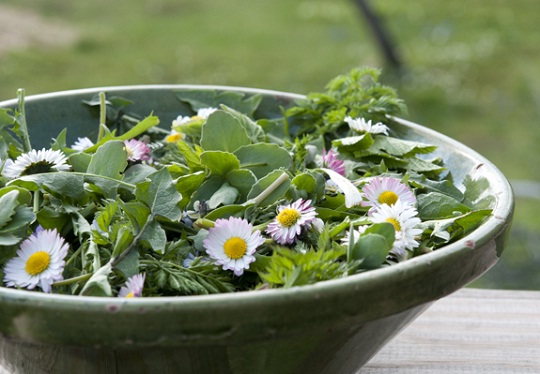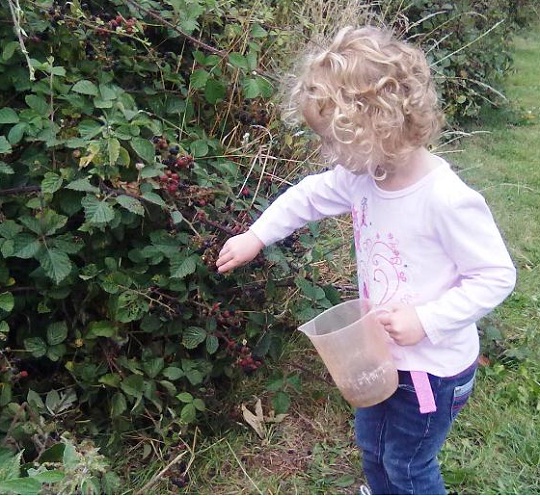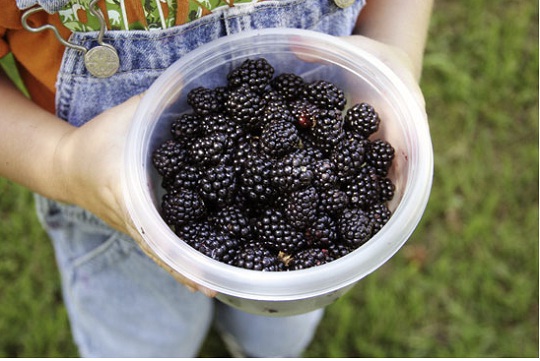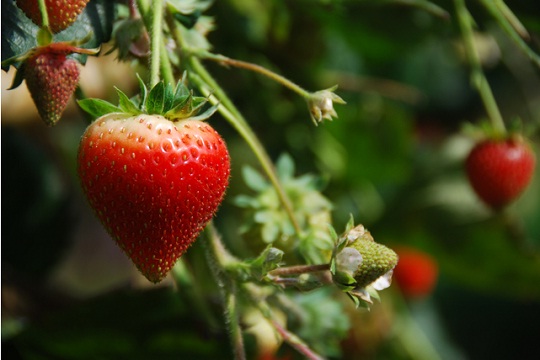 Just over two years ago I had no idea that there was anything like the frugal living movement that's grown up since the start of the recession. Then I started getting into the whole frugal lifestyle, and it was an eye opener.
Just over two years ago I had no idea that there was anything like the frugal living movement that's grown up since the start of the recession. Then I started getting into the whole frugal lifestyle, and it was an eye opener.
One of the most surprising things I learned was just how much food you can pick, for free or very cheaply, even if you live in the city. And also, foraging for wild food was just beginning at that point to become a very popular pastime, out of both necessity for some folks, and choice for others.
We are, I'm sad to say, at the start of August. The last month of what we've laughingly called summer here in the UK. That means many foods are ripening or starting to ripen, and you should start preparing for harvest time now. In fact, we're coming up to the fruitiest time of the year to harvest. In fact in the last two weeks I've discovered a bonanza of free, fresh, organic (possibly) food just waiting to be picked.
And what could be the best way to save money than doing a little of food foraging?
 Recognising food
Recognising food
There's lots of edible plants and herbs that are actually very tasty. But most of us have no idea that they can be eaten. Or we know that they can be eaten by their name, but have no idea what the actual plant looks like. Last year I found out what rosehips look like. And was really surprised as there's a wild hedge of this growing up against a wire fence alongisde a railway embankment. Rosehip contains more vitamin C than any other fruit, and the syrup makes a tasty topper for desserts like ice cream (so I've been told by a friend who made some last year).
There aren't many books devoted to British wild food. I borrowed this one off a friend's bookshelp, the Collins Gem: Food For Free, and it is still available on Amazon. Two other books recommended to me were Roger Philips' Wild Food and Richard Mabey's Food for Free.
You can download the Wild Food School's Urban Foraging Guide for free. This contains clear descriptions and photographs of the edible plants you will find in the wild in cities. I've identified quite a few plants from it in and around the woods, parks and commons near me, but so far I've not quite had the courage to pick and cook any. Partly because some have look-alike poisonous imitators, but mostly because well... it is the city! Stuff out on the ground in the open - well even with cooking how comfortable would you feel about eating it?
How safe is it?
Plants and trees in public places have one fairly signifcant drawback - they may have been sprayed. Signs to look for, according to the Wild Food School, are wilting and chemical residue on leaves. It also suggest that you "study the landscape for signs of contamination - factory fallout, water run off, effluent seepage etc. Avoid plants from busy roadsides, near landfill sites or foul water."
My worries about foraging for food in the city aren't shared by the experts. That is, they do recognise natural polutants as legitimate hazards, but reckon they're pretty much the same in the country side. The 'roadkill chef' Fergus Drennan says, in an article in the Guardian, that other than the plants being muddled up in the city, where you'd find them in specific areas in the country like marsh, seaside, meadow etc, there's really no difference when it comes to foraging for food.
"But in cities the hazards are the same" says Drennan, "misidentification; pollutants, whether they're natural, like dogs, cats, foxes or people peeing on plants, or pesticides and herbicides. And if your identification skills aren't up to scratch, there's all sorts of introduced species and ornamentals that could trip you up."
 Obvious pickings
Obvious pickings
A chance visit to the Imperial War Museum last week introduced me to a fruit I have never tasted before. Mulberries! In the community garden located behind the tennis courts is a huge mulberry tree. These squishy berries taste as sweet as strawberries, and have the texture of soft raspberries. Too soft to be sold in supermarkets, you really do need to get them off the tree.
I was also the lucky recipient of the last of the vegetables maturing in the patch planted by the local school, which had broken up for the school holidays. Dinner that night included roasted courgette, and steamed swiss chard. All free, and picked fresh that afternoon. Just in case you think I'm nicking food, let me reassure that the Park Rangers were handing out the veges.
Then over the weekend I made two large apple pies, and I still have enough cooking apples left over for another. Or maybe a large apple crumble. The apples came gratis, picked off a large apple tree in the back garden of a friend's house. They've just moved in there, and the two apple trees are filled to the brim with green cooking apples ripening in the summer sun. Delicious.
Next weekend, I'm off with the same friends to go blackberry picking in our local park. It is full of quite accessible brambles and last year they got enough fruit to fill a cupboard full of jam jars. Later in September I'll be off to a little park area that fringes the local cemetary to pick a sweeter variety of apple. I know a lot of people can't handle the idea of eating food that has grown near a grave site, but honestly, these graves were filled decades ago. Or longer. The biggest apple trees are located in the old Victorian part of the cemetary.
 And Finally
And Finally
Is it legal? What can you pick and what can't you? It is a bit of a vague area to be honest. The Wild School sums it up best, and this is a good rule of thumb to use.
- it is illegal to uproot ANY wild plant without permission
- it is illegal to disturb or collect plant material from any protected wild plant
- the law of trespass exists, so gain permission before entering someone's land
- a plant is the property of the landowner even if it is a week
So even if those juicy plums are so heavy the branches of the tree are almost to the ground over the fence, you still need to ask permission before picking them! Although technically... OK we didn't. They grow right down into a little playground near us, and are great for tarts. I won't tell if you don't.

 Recognising food
Recognising food Obvious pickings
Obvious pickings And Finally
And Finally















Comments